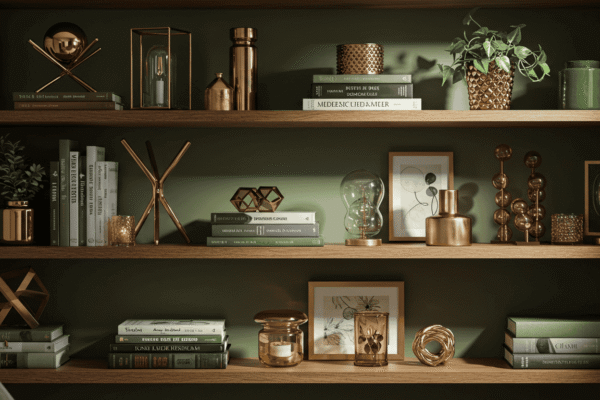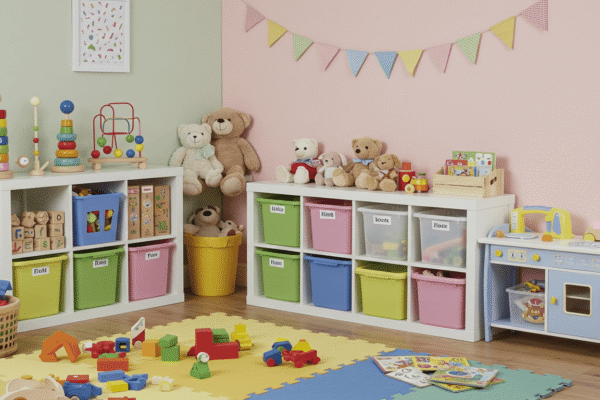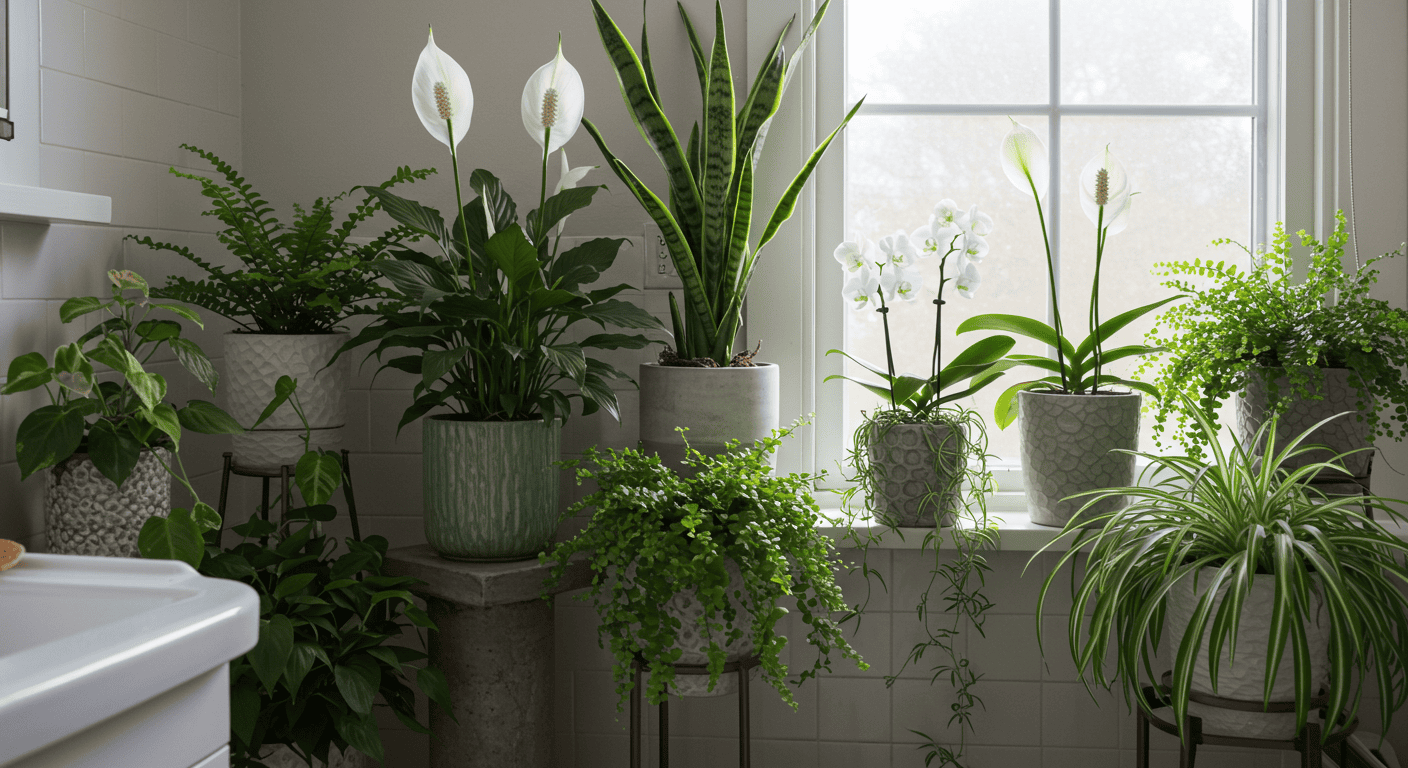Best plants for bathrooms can completely transform a space that’s often overlooked in home décor. Bathrooms naturally provide the perfect environment for certain plants to thrive, thanks to their high humidity and variable light conditions. Whether your bathroom has a sunny window or is completely windowless, there are many humidity-loving bathroom plants that can add freshness, improve air quality, and bring a calming, natural vibe to your daily routine. In this guide, you’ll discover the top plants that flourish in moist spaces, learn how to care for them, and get creative ideas to style your bathroom with greenery—making it both beautiful and functional.
What Makes a Plant Ideal for the Bathroom?
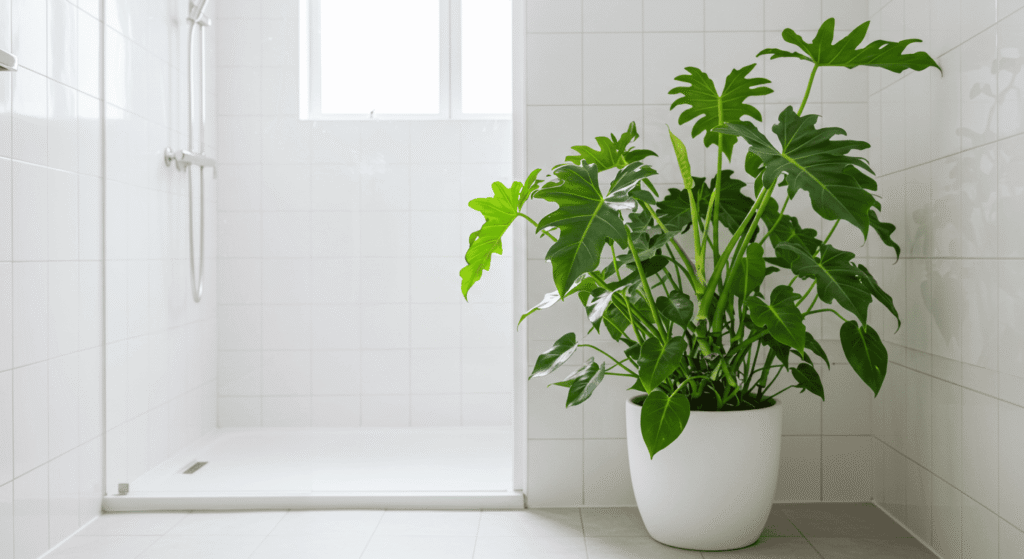
Choosing the best plants for bathrooms involves understanding the unique conditions these spaces offer. Bathrooms differ from other rooms in several key ways, which influence which plants will thrive. Recognizing these factors helps in selecting plants that can not only survive but truly flourish in such an environment.
What Bathrooms Offer That Other Rooms Don’t
Bathrooms create a distinct microclimate that is often ideal for certain types of plants. This is mainly due to three important factors:
High humidity levels
Bathrooms naturally experience elevated humidity, especially after hot showers or baths. This moisture-rich air creates an environment similar to tropical climates, perfect for plants that love damp conditions. Many houseplants struggle in dry indoor air but will thrive here, making humidity a vital consideration when choosing plants.
Variable light conditions
Unlike living rooms or kitchens, bathrooms often have less consistent natural light. Some bathrooms have frosted windows or small skylights that provide diffused or limited sunlight, while others may have no windows at all. Plants that can tolerate low or indirect light perform best under these variable lighting conditions.
Temperature fluctuations
Bathrooms frequently experience shifts in temperature due to hot water use and ventilation changes. Some plants are sensitive to these fluctuations, while others adapt well. Selecting species that can handle occasional warmth or cooler spells will ensure longevity in a bathroom setting.
Key Traits of the Best Plants for Bathrooms
Knowing what to look for in a plant’s characteristics can simplify the selection process. The best plants for bathrooms share several important traits:
Humidity tolerance
Plants that naturally grow in humid environments or can tolerate damp air are the best candidates. This ensures they won’t suffer from constant moisture and will make use of the bathroom’s climate to grow healthy and lush.
Low light adaptability
Since many bathrooms receive only indirect or low light, plants that can photosynthesize effectively under these conditions will survive and thrive. This makes low-light adaptability one of the most crucial traits.
Compact growth or vertical growth
Bathrooms are often limited in space, so plants that don’t require large pots or sprawling roots are ideal. Compact plants or those that grow upward rather than outward help maximize space without overcrowding.
Types of Bathroom Environments
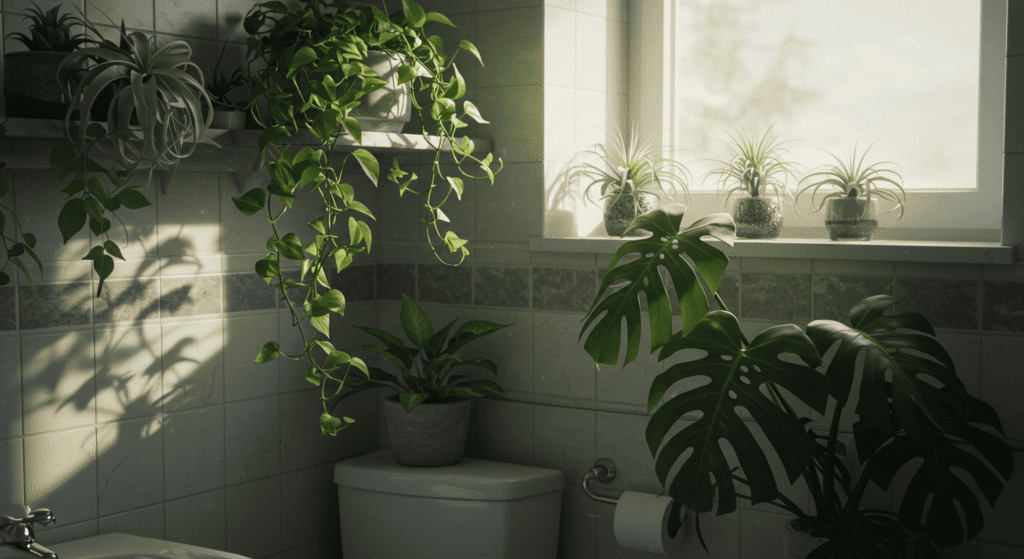
Understanding the specific light and space conditions in your bathroom can help narrow down your plant choices:
Windowless bathrooms
These rooms lack natural light completely, making it essential to choose plants that survive in very low or no light conditions. Humidity-loving plants that do not rely on direct sunlight are the best fit here.
Bathrooms with filtered light
Many bathrooms have frosted or small windows that let in soft, diffused light. This filtered light is ideal for plants that prefer indirect sunlight and moderate moisture.
Bright bathrooms with indirect light
Some bathrooms receive ample natural light but not direct sunlight. Plants that thrive in bright, indirect light can flourish in these environments, benefiting from the extra illumination without risk of leaf scorch.
The Top 15 Plants That Thrive in Humid Bathrooms
Finding the best plants for bathrooms means focusing on species that flourish in the unique conditions of humidity and variable light. To help you make the perfect choice, here is a table highlighting 15 plants that are well-suited for bathroom environments, categorized by their light needs, humidity tolerance, ideal placement, and ease of care.
| Plant Name | Light Needs | Humidity Tolerance | Ideal Placement | Ease of Care |
|---|---|---|---|---|
| Snake Plant | Low to indirect | High | Corner, shelf, or countertop | Very easy |
| Boston Fern | Indirect, filtered | Very high | Hanging baskets, shelves | Moderate |
| Spider Plant | Low to bright | High | Near windows or hanging | Easy |
| Peace Lily | Low to medium | Very high | Countertops, corners | Moderate |
| Aloe Vera | Bright, indirect | Moderate | Window sills | Easy |
| Pothos | Low to bright | High | Hanging or trailing spots | Very easy |
| ZZ Plant | Low to indirect | Moderate | Shelves, corners | Very easy |
| Orchid | Bright, indirect | High | Window ledges | Moderate |
| Philodendron | Low to medium | High | Hanging baskets, shelves | Easy |
| Cast Iron Plant | Low light | Moderate | Dark corners | Very easy |
| Bamboo Palm | Medium to bright | High | Floor pots | Moderate |
| Rubber Plant | Medium to bright | Moderate to high | Floor pots, corners | Moderate |
| Bird’s Nest Fern | Low to medium | Very high | Wall-mounted or shelves | Moderate |
| Maidenhair Fern | Indirect light | Very high | Shelves, hanging baskets | Challenging |
| Calathea | Low to medium | Very high | Shelves, tabletops | Moderate |
Humidity-Loving Champs
These plants thrive in consistently moist air and make the most of your bathroom’s natural humidity. Ferns like Boston Fern and Bird’s Nest Fern are classic choices that not only add lush greenery but also love the steamy atmosphere. Peace Lily and Calathea are also excellent humidity lovers that brighten spaces with their rich leaves and flowers.
Plants That Handle Low Light
Many bathrooms don’t get much natural light, so choosing plants that tolerate or prefer low-light conditions is essential. Snake Plant, ZZ Plant, and Cast Iron Plant are tough survivors that can thrive with minimal sunlight. These plants are perfect for windowless bathrooms or spaces with only artificial light.
Compact Plants for Small Bathrooms
If space is tight, opt for plants with a compact or vertical growth habit. Pothos and Philodendron grow well in hanging baskets or small pots, making them versatile for shelves or corners. Aloe Vera and Spider Plant are also good compact options that require little space but still add greenery and freshness.
Styling Tips: How to Place Plants in Bathrooms
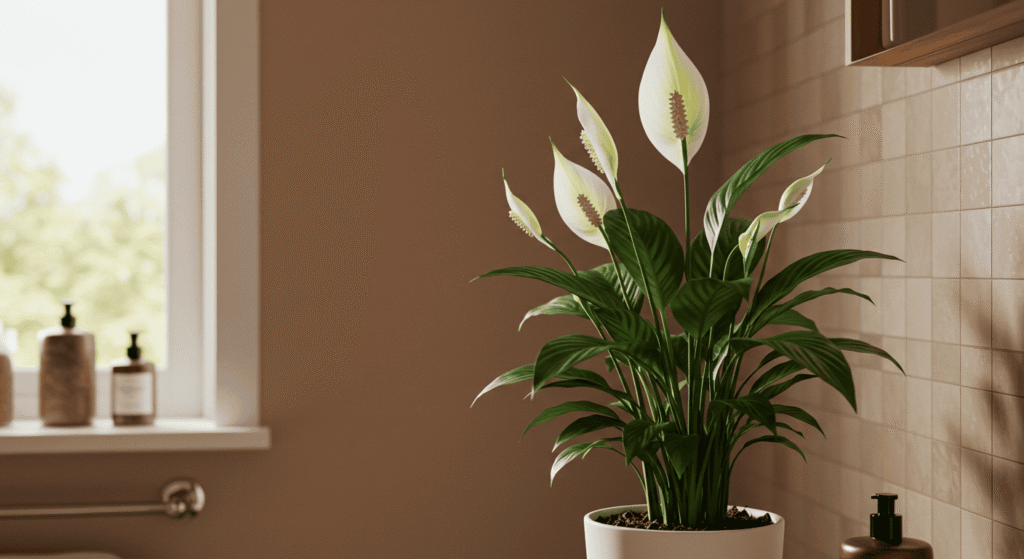
Adding the best plants for bathrooms is not just about picking the right species—it’s also about how you place them to maximize both their health and your bathroom’s style. Thoughtful placement can transform your bathroom into a refreshing, inviting space while making the most of limited room and light.
Creative Placement Ideas
Bathrooms often have awkward or underutilized spaces that are perfect for plants. Consider installing corner shelves to create a mini indoor garden without crowding countertops. Hanging pots are ideal for trailing plants like pothos or spider plants, adding layers of greenery at different heights. Over-the-toilet racks are another smart solution to add vertical interest without sacrificing precious floor or counter space.
Grouping plants by moisture needs is another clever way to keep your greenery thriving. Placing humidity-loving ferns and peace lilies together near the shower or bathtub takes advantage of the moisture-rich air, while plants that prefer drier conditions can go further from direct steam zones.
Maximizing Space in Small Bathrooms
Small bathrooms require strategic use of space. Vertical gardening techniques help you make the most of walls and unused corners. Use hanging pots or wall-mounted planters to free up floor and counter areas.
Opt for plants with upright or trailing growth habits to fit limited spaces better. Upright plants like snake plants or bamboo palms add height without spreading out, while trailing vines can soften edges and add flow by cascading down shelves or hanging planters.
Decorative But Practical
Bringing style and function together makes caring for bathroom plants easier and more enjoyable.
Living wall ideas
Create a green statement wall using modular planters arranged vertically. This not only maximizes space but adds a lush, textured focal point to the room.
Grouping for visual interest
Arrange plants in clusters with varying heights, leaf shapes, and colors. Groupings create a natural, layered look that feels intentional and vibrant.
Using plant stands or corner ladders
Plant stands and corner ladders add dimension and organize multiple plants without cluttering surfaces. They are especially useful for bathrooms where counter space is limited but floor corners are available.
How to Care for Bathroom Plants (Without Killing Them)
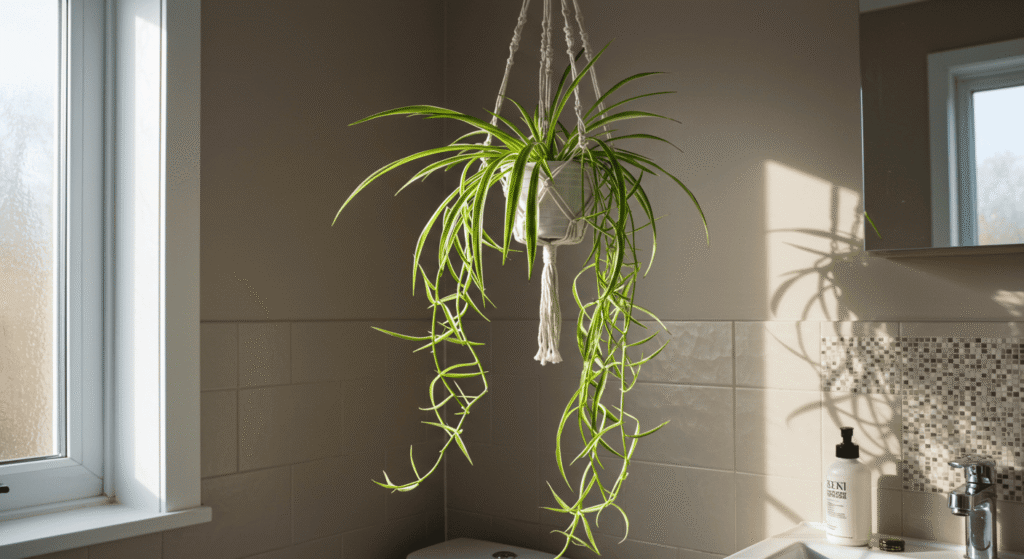
Caring for the best plants for bathrooms may seem easy because of the natural humidity, but even the most humidity-loving plants can suffer if care is not balanced. Understanding the difference between beneficial humidity and overwatering is key to keeping your greenery healthy and vibrant.
Understanding Humidity vs. Overwatering
Many assume that because bathrooms are humid, plants need less water—or that high humidity replaces watering altogether. However, high humidity ≠ no watering. While the moisture in the air helps keep plants hydrated, their roots still need regular watering to absorb nutrients and stay alive.
One of the most common mistakes is overwatering in humid bathrooms. Excess water combined with moisture-rich air can cause root rot, fungal issues, and wilting. Learn to recognize signs of overwatering in humid spaces, such as yellowing leaves, soft or mushy stems, and a musty smell in the soil.
Best Watering Practices
Watering frequency depends largely on the plant’s species and the bathroom’s light levels. Plants in low light typically need less water because their growth slows down, while those in brighter spots require more frequent watering.
To avoid waterlogging, always ensure proper drainage. Use pots with drainage holes and place a saucer underneath to catch excess water. Let the soil dry out slightly between watering sessions to maintain balance.
Grooming & Cleaning Tips
Maintaining bathroom plants involves regular grooming to prevent pests and promote healthy growth.
Wipe leaves to prevent mold
Bathroom humidity can cause dust and moisture buildup on leaves. Gently wiping leaves with a damp cloth removes dust and helps prevent mold or mildew growth.
Remove yellowing foliage
Yellow or damaged leaves not only look unsightly but can drain the plant’s energy. Regularly trim these to encourage new growth and keep your plants looking fresh.
Prune to encourage growth
Trimming leggy or overgrown stems helps maintain the plant’s shape and promotes fuller, healthier foliage. It also improves air circulation around the plant, reducing disease risk.
Bathroom Light Conditions: What’s Actually “Low Light”?
Understanding the lighting in your bathroom is crucial when selecting the best plants for bathrooms. Many people assume their bathroom has “low light,” but what does that really mean? Clarifying the different types of light will help you choose plants that thrive rather than just survive.
What Counts as Low Light?
Low light refers to areas that receive little to no direct sunlight. Bathrooms often fall into this category due to frosted windows, small or no windows, or placement away from natural light sources.
It’s important to distinguish between indirect vs. filtered light. Indirect light is sunlight that reaches the plant without shining directly on it — think of a window with sheer curtains or a plant positioned away from the window. Filtered light means sunlight is softened or partially blocked, such as through frosted glass or blinds.
Why Most Bathrooms Qualify
Most bathrooms don’t get direct sunlight for long periods, making them naturally low-light spaces. Even bathrooms with windows often have frosted glass for privacy, which filters light significantly. This means many bathrooms are perfect for plants that thrive in low to medium light but can struggle with harsh, direct sun.
Adjusting Your Setup for Healthier Plants
To make the most of your bathroom’s light conditions, a few simple adjustments can help:
- Use mirrors or reflectors to bounce natural light around the room, brightening darker corners and improving overall illumination for your plants.
- Rotate plants regularly so all sides receive light evenly, encouraging balanced growth and preventing uneven leaf development.
Table: Bathroom Light Cheat Sheet
| Light Level | Plant Type Suggestions | Care Notes |
|---|---|---|
| No window | Hardy low-light species | Rotate often |
| Frosted window | Medium-light plants | Filter harsh rays |
| Bright but indirect | Tropical species | Avoid direct beams |
Benefits of Adding Plants to Your Bathroom
Incorporating the best plants for bathrooms does more than beautify your space — it brings tangible health and wellness advantages that enhance your daily routine.
Natural Air Purification
Many bathroom plants actively help remove moisture and odors from the air, improving overall air quality. Certain foliage is known for its ability to absorb airborne toxins and excess humidity, making your bathroom feel fresher and cleaner. This natural purification reduces mold risk and creates a healthier environment.
Impact of Certain Foliage on Air Quality
Plants like ferns and peace lilies have dense leaves that trap dust and pollutants, while others help balance moisture levels to prevent musty smells. This means that the right plants don’t just look good — they actively contribute to a cleaner, more breathable space.
Mood-Boosting and Stress Reduction
Bringing greenery into your bathroom supports a connection to mental wellness. Studies show that exposure to plants can reduce stress, lower blood pressure, and improve mood — perfect for starting or ending your day on a calm note.
The color green itself is psychologically linked to calmness and relaxation, making bathroom plants a natural way to create a peaceful, spa-like atmosphere in your home.
Table: Wellness Benefits by Plant Type
| Plant Type | Mood Impact | Air Purifying Power | Best Bathroom Location |
|---|---|---|---|
| Boston Fern | High (soothing green) | High (moisture absorber) | Hanging near shower or tub |
| Peace Lily | Moderate (flowering) | High (removes toxins) | Countertops or corners |
| Snake Plant | Moderate (architectural) | Moderate (cleans air) | Low light areas |
| Spider Plant | High (airy foliage) | High (removes pollutants) | Near windows or hanging pots |
| Aloe Vera | Moderate (succulent) | Moderate (air cleaner) | Window sills with indirect light |
| Pothos | Moderate (trailing) | Moderate (odor absorber) | Shelves or hanging baskets |
Common Mistakes to Avoid with Bathroom Plants
Successfully growing the best plants for bathrooms means avoiding some common pitfalls that can quickly harm your greenery and spoil the relaxing vibe you’re aiming for.
Overwatering in Already Humid Spaces
One of the biggest mistakes is overwatering. Bathrooms naturally have high humidity, which means plants often need less frequent watering than they would in other rooms. Overwatering combined with moist air can lead to root rot, fungal growth, and other problems.
Choosing the Wrong Plants for the Light Level
Not all plants thrive in every bathroom light condition. Selecting species that don’t match your bathroom’s natural light is a frequent error. For example, placing a low-light tolerant plant in bright, direct light can cause leaf burn, while a light-loving plant in a dark, windowless bathroom may become weak and leggy.
Ignoring Airflow and Ventilation
Bathrooms can sometimes have poor air circulation, which impacts plant health. Stagnant, stale air promotes mold and mildew growth, not only on your plants but also in the room itself. Ensuring good airflow helps keep plants dry and healthy.
Mold issues
Excess moisture without ventilation encourages mold on soil and leaves, harming the plant and creating an unhealthy environment.
Droopy leaves
Lack of airflow combined with too much moisture can cause leaves to droop or turn yellow, signaling distress.
Stale air consequences
Poor ventilation limits plant respiration and increases the risk of pests and diseases.
Your Mini Bathroom Jungle: Tips for Maintenance & Rotation
Creating a lush, thriving bathroom jungle takes more than just placing plants — it requires ongoing attention to keep everything fresh and healthy.
How to Keep Things Fresh
Regularly rotate plants between rooms if possible to give them exposure to different environments. Changing up their placement monthly helps prevent any side of the plant from becoming leggy or weak due to uneven light.
Switching plants around also refreshes your bathroom’s look, making it feel like a living, evolving space rather than a static display.
Season-Based Bathroom Plant Care
Seasonal changes affect your plants even in the bathroom. Adjust your care routine throughout the year to keep your jungle thriving.
Winter—Less watering
During colder months, many plants go into a slower growth phase and require less water. Overwatering in winter can be especially harmful.
Summer—Watch for sunburn
If your bathroom gets brighter light in summer, watch for signs of leaf sunburn and adjust placement as needed.
Spring/Fall—Pruning and repotting
These seasons are ideal for pruning to encourage new growth and repotting plants that have outgrown their containers.
Monthly Plant Care Checklist
| Task | Frequency | Notes |
|---|---|---|
| Watering | Weekly | Adjust for plant type |
| Dusting leaves | Bi-weekly | Prevent mold buildup |
| Rotating plants | Monthly | Ensure even light exposure |
| Pruning | As needed | Remove dead growth |
Why the Best Plants for Bathrooms Are a Must-Have for Your Home
Choosing the best plants for bathrooms is more than just a design choice—it’s a way to enhance your space with natural beauty, improved air quality, and a calming atmosphere. By understanding your bathroom’s unique environment and selecting plants suited to humidity and light conditions, you set yourself up for success. With proper care and creative styling, your bathroom can become a lush, refreshing retreat that uplifts your daily routine. Adding these green companions is an easy, rewarding step toward a healthier, more inviting home.


